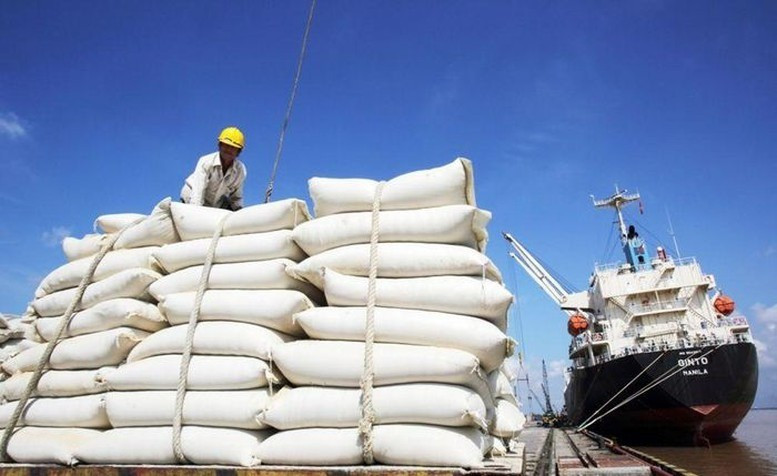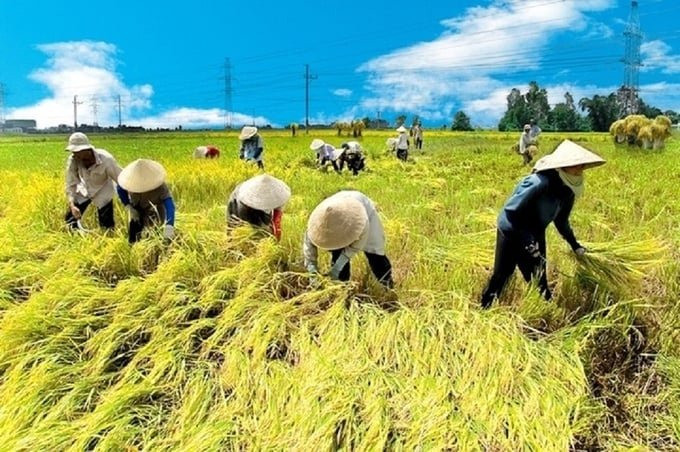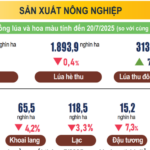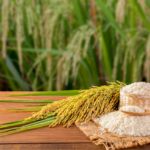India Unveils Record Rice Stockpile Release
On July 31, the Indian government announced plans to release up to 20 million tons of rice from its national reserves—a move considered unprecedented in scale. Of this, 7.5 million tons will be auctioned electronically to private companies and cooperatives; 3.6 million tons will be sold to states at a discounted rate of approximately $257/ton; and 5.2 million tons will be allocated to ethanol production plants…
This news immediately sent international rice prices tumbling. The sudden surge in supply forced many countries to adjust their prices to maintain market share. In early August, export prices of Thai and Pakistani rice fell by $10–15/ton compared to the previous week, with Indian rice prices also witnessing a slight dip.
Currently, the price of 5% broken white rice from Thailand stands at $362/ton, a 28% decrease from late 2024 and the lowest since 2017.
As a result, rice prices in the international market have plummeted to their lowest levels in eight years, severely affecting farmers in many Asian countries.

India’s stockpile release has pushed international rice prices to their lowest levels in eight years. Illustration: IT.
This downward trend began in September 2024 when India gradually eased export restrictions following a record-breaking 2023–2024 harvest, leading to a sharp increase in government reserves.
According to the Food and Agriculture Organization of the United Nations (FAO), the global rice price index has dropped by 13% since the beginning of the year. FAO predicts that rice production for the 2024/2025 season will once again reach historic highs. The current supply glut is exerting downward pressure on prices, threatening the income of Asian farmers in the coming months.
Quoted in the Financial Times, Samarendu Mohanty, director of the Center for Sustainable Agriculture and Development at Telangana State Agriculture University in India, remarked: “It’s simply that there’s too much rice being supplied to the market. Last year, India’s rice production hit a record, and this year’s planting season is also likely to break records. This is putting immense pressure on the global market.”
Vietnamese Rice Swims Against the Tide
Contrary to the global downward trend, Vietnam’s rice export prices in early August rose by an average of $10/ton compared to the previous week, with fragrant rice varieties ranging from $510 to $517/ton. This surge can be attributed to strong demand from the Philippines ahead of its temporary 60-day import suspension starting September 1. As a result, Vietnamese rice has regained its position as the most expensive among the top rice-exporting countries.

Vietnamese rice regains its position as the most expensive among top exporters. Illustration: IT.
According to the Vietnam Food Association (VFA), rice exports for the first seven months of the year reached approximately 5.5 million tons, a 3.1% increase compared to the same period last year. However, revenue fell by nearly 16% to $2.81 billion due to declining prices. The average export price currently stands at $514/ton, higher than that of Thailand and Pakistan.
Mr. Do Ha Nam, Chairman of the VFA, stated: “Vietnamese rice still cannot meet market demand due to our unique rice varieties such as DT, OM, and especially ST. This year, we are expected to export at least 8 million tons, maintaining our position as the second-largest exporter in the world, only behind India.”
India’s stockpile release did not directly impact Vietnamese rice due to their differing market segments. On the other hand, the Philippines’ temporary import suspension has pushed up Vietnamese rice prices. In the long run, the Philippines will not completely shut down rice imports, remaining Vietnam’s largest market with a share of approximately 42–44%.
The temporary suspension will not affect domestic production either. As the summer-autumn crop in the Mekong Delta is nearing its end, there is no pressure on inventory clearance. The subsequent winter-spring crop usually only accounts for 50–60% of the main crop (winter-spring), ensuring that Vietnam faces no pressure in inventory management until the end of the year.
Mr. Nguyen Anh Son, Director of the Import-Export Department of the Ministry of Industry and Trade, reported that upon receiving the news of the Philippines’ temporary suspension, the Ministry promptly submitted a report to the government and proposed diplomatic solutions to address this issue.
In terms of markets, rice exports to Africa and China are on the rise. As of the end of June, exports to Africa exceeded 1 million tons, with notable increases in markets such as Ivory Coast (nearly double) and Ghana (over 50%). Exports to China also surged by over 80% in value compared to the same period last year.
While low-price markets still contribute significantly to Vietnam’s rice exports, the industry is actively shifting its focus to high-value and stable markets such as Japan, South Korea, and the EU. Certain specialty rice varieties like ST25 are exported to Europe at prices exceeding $1,200/ton, double the price in China.
Amid the downward trend in global rice prices, Vietnam maintains its advantage due to its stable markets, high-quality products, and adaptability. By sustaining its export pace and leveraging FTAs, the industry is poised to retain its second-place ranking globally in terms of export turnover for 2025, setting the stage for a new growth phase.
The Rice Conundrum: Vietnam’s Rice Prices Fluctuate Following Philippines’ Import Ban
Domestic rice prices witnessed a slight dip following the news of the Philippines’ temporary suspension of rice imports for two months, effective from September 1st.
The Green Revolution: Agricultural Production Soars in the First Seven Months of 2025
In the first seven months of 2025, aquatic product yield increased by 3.1% and timber production rose by 7.6% compared to the same period last year. While the area of cultivated rice decreased by 0.9% for the summer-autumn crop and 0.4% for the autumn crop, the area of cultivated rice in the Mekong Delta for the winter-spring crop increased by 7.1% year-on-year.










































